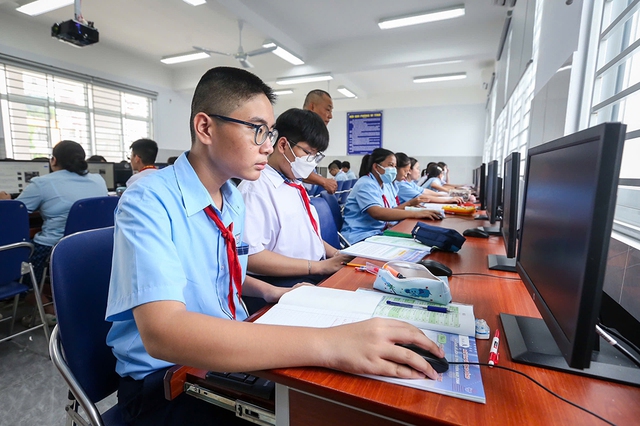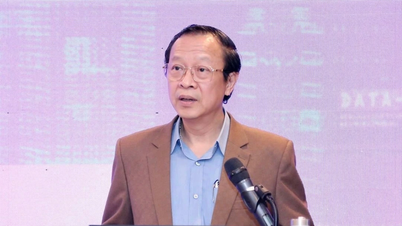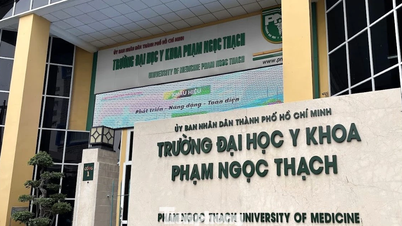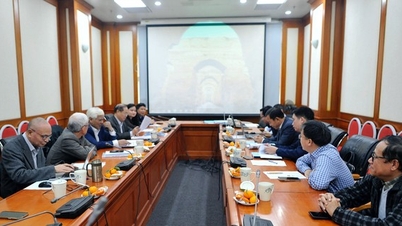In the world , computer-based testing has been widely deployed at many levels and fields, from high school to university, from vocational certificates to language tests. International exams such as IELTS on computer, TOEFL iBT, SAT, MOS (Microsoft Office Specialist), ICDL (International Computer Driving Licence)... are all organized seriously, according to standards, with a system of verifying results and a rich, continuously updated test bank. Vietnam is not out of this game.

It is necessary for students to be exposed to and familiarized with taking exams on computers early.
PHOTO: NHAT THINH
However, we cannot make a leap from paper-based exams to nationwide computer-based exams overnight, but need a roadmap divided into 3 stages:
Phase 1 (2025 - 2027): Small-scale pilot in schools that meet digital standards. Focus on highly objectivated subjects such as foreign languages, information technology, math, physics, and chemistry. Students get acquainted with in-class tests and final exams on computers.
Phase 2 (2028 - 2030): Expand to localities with good IT infrastructure. Combine independent testing centers where students can register for exams outside of school. The central exam bank system begins to operate.
Phase 3 (after 2030): Nationalize computer-based testing in high school exams and entrance exams. At this point, most students are familiar with it, the system is complete, and data is connected between localities. The Ministry of Education and Training only plays the role of coordinating, monitoring, and developing assessment standards.
Computer-based exams will have outstanding advantages over paper-based exams. The advantages can be seen as: Fast, accurate, saving human resources; automatic grading, fast output of results, avoiding errors and negativity; customizable exam questions, each candidate has a separate exam code, avoiding rote learning, biased learning; easy to reorganize supplementary exams; students with problems can easily retake the exam, without having to wait for the next round. In addition, computer-based exams also reduce the pressure of printing, transporting, and securing paper exams. This form of exam helps candidates use AI as a learning support tool.
However, it is also necessary to consider difficulties such as funding and synchronization. We cannot avoid the fact that infrastructure investment funding is the biggest obstacle. However, compared to unnecessary expenses in education (festivals, formalities, documents...), investing in computers, stable networks, and exam software is an investment for sustainable development. Instead of competing for scores, let's switch to competing for innovation in assessment technology. Along with that, we must train teachers to use the system, foster expertise in creating standardized questions, and increase communication for parents and students to reduce concerns and create social consensus.
Switching to computer-based testing is not a choice, but an inevitable direction. It is the trend of modernizing education, a way for Vietnam to gradually integrate into international assessment standards. But like any reform, it requires trust, a smart roadmap, focused investment and especially determination from leaders to teachers. Education only truly changes when assessment changes. And computer-based testing, with all the advantages of technology, fairness and transparency, is the push for Vietnam's education to enter a new era: Smart education in the digital age.
Source: https://thanhnien.vn/de-xuat-3-giai-doan-thuc-hien-thi-tot-nghiep-thpt-tren-may-tinh-18525070919265589.htm



![[Photo] Prime Minister Pham Minh Chinh receives President of Cuba's Latin American News Agency](/_next/image?url=https%3A%2F%2Fvphoto.vietnam.vn%2Fthumb%2F1200x675%2Fvietnam%2Fresource%2FIMAGE%2F2025%2F12%2F01%2F1764569497815_dsc-2890-jpg.webp&w=3840&q=75)









































































































Comment (0)